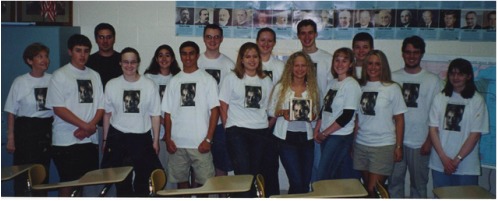Foote's Fan Mail Following The Civil War
In the September of 1990, Ken Burns’ eleven-hour documentary, The Civil War, premiered on PBS. Running for five consecutive nights, the documentary proved to be a huge success, capturing 39 million viewers during its initial broadcast and receiving several major television and film awards, including two Grammys, two Emmys, and a Golden Globe.[1] With eight-nine appearance in the series, Shelby Foote played an integral part in this documentary’s production, and its immense success led to Foote’s newfound fame. He amassed thousands of fans, who, in response to his captivating appearance onscreen, sent Foote large amounts of fan mail.
Foote already enjoyed some attention prior to The Civil Wardue to his previous novels and Civil War trilogy, but most Americans came to know Foote for the first time through the documentary. Attracted to Foote’s Southern drawl, mellifluous voice, and engaging anecdotes, fans sent Foote hundreds of letters, emails, and phone calls. The vast majority of the mail Foote received was very positive. Viewers praised him for his knowledge, storytelling abilities, and Southern charm. Occasionally, however, Foote did receive a negative response, usually criticism for his admiration and respect for the controversial Confederate General Nathan Bedford Forrest.
Foote’s fans came from all over the country – even the world – with some letter-writers from France, England, and Australia, among other countries. They also varied in age and background. Both men and women shared their admiration for Foote, and one lady even disregarded his marriage to Gwyn and proposed to Foote over the phone. While the majority hailed from his native South, others wrote to Foote as self-proclaimed Yankees. “Your narration,” wrote northern fan James A. Murphy, “changed my fifty plus year old impression of the “Deep South.”’[2] Foote spoke about the war, and specifically the South, with a different perspective than many other historians, which sparked an interest in Foote’s fans. Foote’s appearances in the documentary obviously made an impact on the viewers. Another viewer, Roy Etoate, wrote, “Nothing I have ever seen on television has ever compelled me to write anyone before, until that is, I seen and heard you.”[3] Foote inspired those who watched the documentary to learn more about the Civil War and to write about it as well. Many fans wrote to Foote to ask questions about the war or sent him copies of their own writing, hoping he would read it and grace them with some of his wisdom. A large amount of the letters Foote received consisted of fans asking for signed copies of his books, something Foote did not particularly appreciate.
When Ken Burns gathered information and interviewed scholars in preparation for his documentary, he saw something special in Shelby Foote. Burns took this instinct and ran with it, giving Foote more airtime than anyone else featured in the documentary. Although Foote undoubtedly received hundreds of letters, he saved a sampling of them, allowing scholars today to study just how much of an impact he really had on the viewers of The Civil War.
Footnotes
[1] Gary Edgerton, “Ken Burns’s Rebirth of a Nation: Television, Narrative, and Popular History,” in The Historical Film: History and Memory in Media, ed. Marcia Landy (New Brunswick, NJ: Rutgers University Press, 2001), 304.
[2] James A. Murphy, To Shelby Foote, n.d., Shelby Foote Collection (Box 42, Folder 7), Rhodes College Archives, Memphis, Tennessee, hereafter cited as “Foote Collection.”
[3] Roy Etoate, To Shelby Foote, n.d., Shelby Foote Collection (Box 42, Folder 7), Foote Collection.
